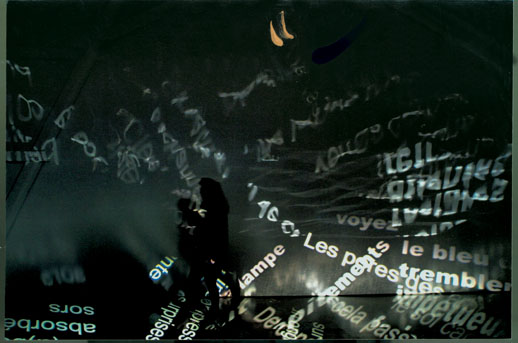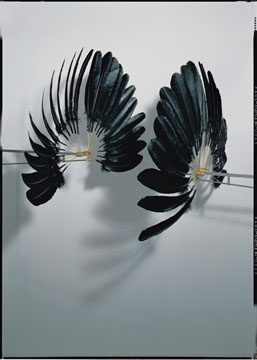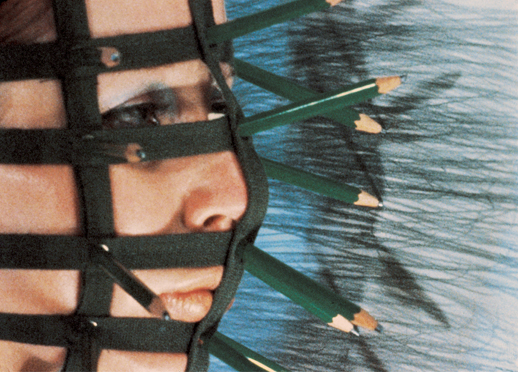Discordant Symphonies
German multi-media artist Rebecca Horn is currently being treated to her first large-scale, career-tracing exhibition in Japan, courtesy of the MOT. Horn herself was present at the opening, a formidable presence with long pumpkin-colored hair and wearing steel-toed leopard print shoes that can only be described as awesome. Speaking before the black-clad, digicam wielding press, the artist extended an invitation to journey to her world, one in which she has been working in artistically for over thirty years.
The retrospective, which Horn played a part in orchestrating, is titled, “Rebellion in Silence: Dialogue between Raven and Whale.” In addition to being rather obtuse, this title stuck me as a bit misleading. In fact, a number of Horn’s pieces have an inherent soundtrack: the faint whirring of the many mechanical pieces, the music composed by Hayden Chisholm for the installation ‘Light imprisoned in the belly of the whale’, and the resplendent clunk of the upturned, suspended piano that is ‘Concert for Anarchy’. This discordant symphony, along with Horn’s signature part natural, part mechanical kinetic sculptures (like ‘The Raven’s Twin’) give the exhibition a vaguely gothic feel.

 In particular, however, the title seemed to point to two adjacent works, ‘The Raven Tree’, created just his year, and ‘Light Imprisoned in the belly of the whale’, made somewhat earlier, in 2002. One, a tangle of slender stems sprouting curved beaks, looks outward, seemingly searching, grasping for air, a better vantage point, to break free and become distinct. The other, encompassing and inward-looking, has at its center a single quill-like object suspended over a reflecting pool, animated in the act of writing; words are reflected on the walls of the darkened room. When I nervously asked the artist if she could expound on the title and juxtaposition of these two works, she explained that the raven and the whale represented, to her, two extremes. Then, apparently tiring of my need for answers, told me to look around and find my own meaning.
In particular, however, the title seemed to point to two adjacent works, ‘The Raven Tree’, created just his year, and ‘Light Imprisoned in the belly of the whale’, made somewhat earlier, in 2002. One, a tangle of slender stems sprouting curved beaks, looks outward, seemingly searching, grasping for air, a better vantage point, to break free and become distinct. The other, encompassing and inward-looking, has at its center a single quill-like object suspended over a reflecting pool, animated in the act of writing; words are reflected on the walls of the darkened room. When I nervously asked the artist if she could expound on the title and juxtaposition of these two works, she explained that the raven and the whale represented, to her, two extremes. Then, apparently tiring of my need for answers, told me to look around and find my own meaning.
It has been written that Horn’s work builds upon itself and this would suggest that, several decades into her career, the artist is working in a highly refined symbolic language. A number of the pieces on display at the MOT, the paintings and kinetic sculptures on the entrance floor, are in fact rather new. Striking in their own right, with a curious beauty both natural and unnatural, they taunt the viewer with their alien-ness.
In contrast, the chronology of videos that come later in the exhibition, some early performance footage and other video features produced by the artist, offer an opening and a more studied approach the visual tropes of Horn’s work. While it would seem to make more sense to enter from the beginning, to learn the language of her world before journeying further, I believe that the structure of the exhibition was likely intended to encourage the viewer first, as Horn said, to discover one’s own meaning. The following eight career spanning videos show the artist telling her own stories, her world as she sees it. Given that a number of these near the hour mark in length, a thorough voyage to the world of Horn should be considered a day-trip rather than an afternoon excursion.

Rebecca Milner
Rebecca Milner



